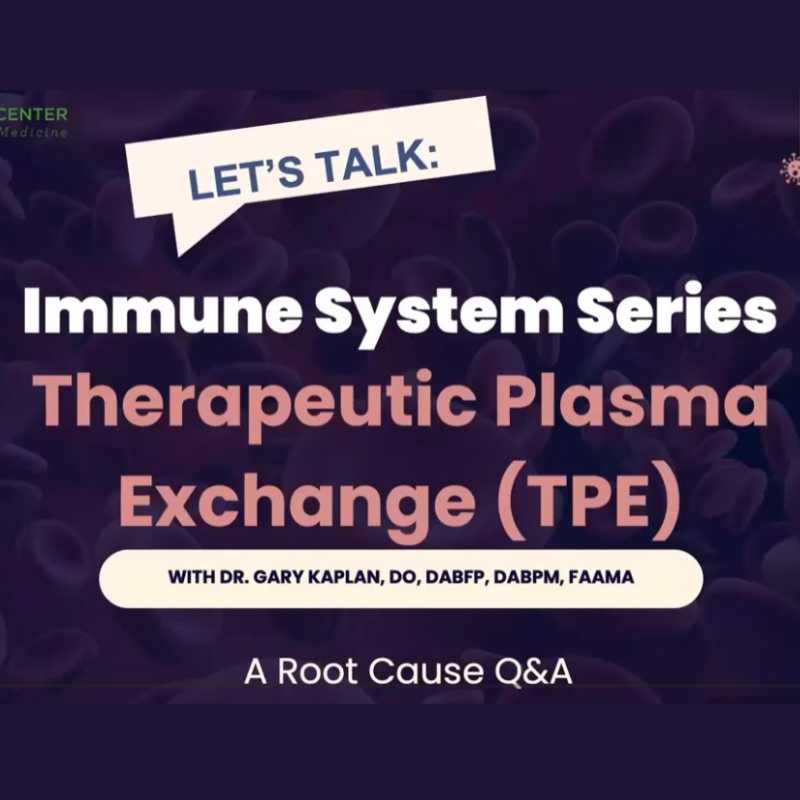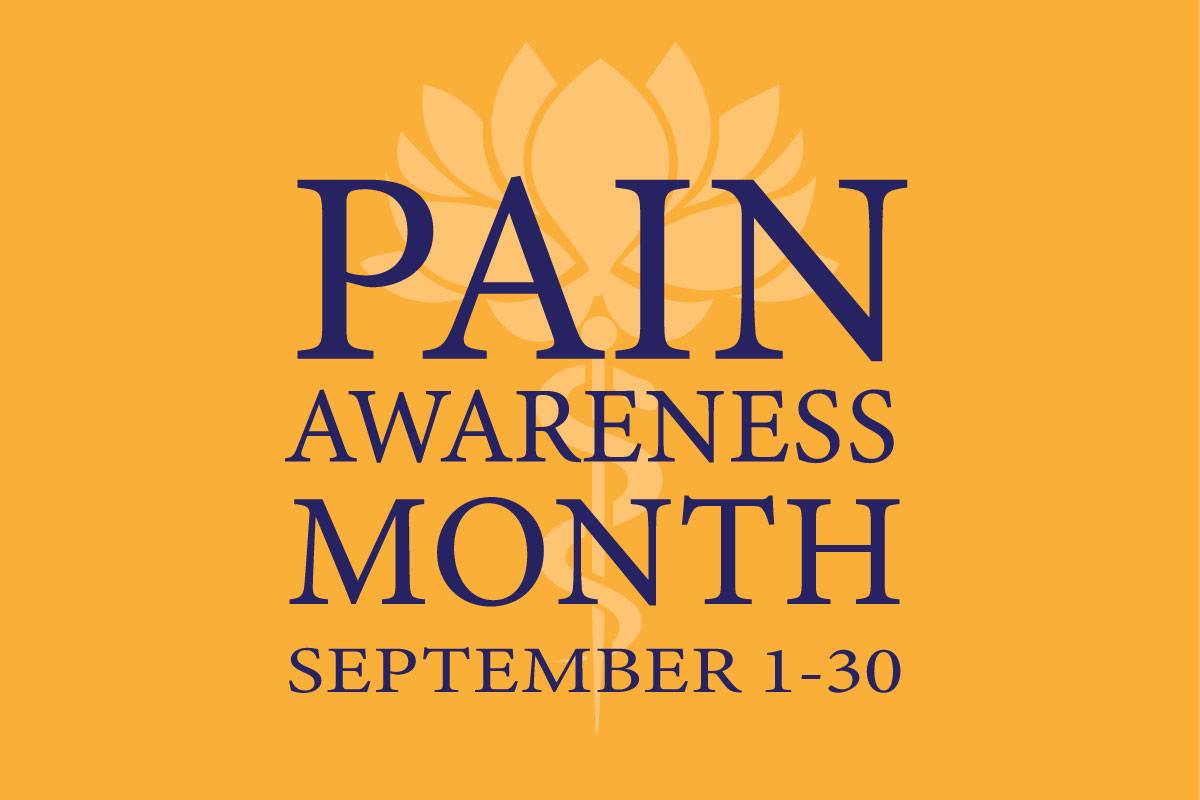
5 Ways We Can Keep Your Immune System Strong
December 10, 2025/by Kaplan Center
Want to Take Your Workout to the Next Level Next Year? These Tips Can Help
December 8, 2025/by Kaplan Center
Dr. Kaplan’s Dos and Don’ts of the Holiday Season
December 3, 2025/by Kaplan Center
Let’s Talk Webinar – A Root Cause Q&A
December 2, 2025/by Kaplan Center
Navigating Holiday Meals with Gut Issues: Simple Tips for a Comfortable Season
December 1, 2025/by Chardonée Donald, MS, CBHS, CHN, CNS, LDN
Craniosacral Therapy for TMJ | Say Goodbye to the Daily Grind
November 19, 2025/by Patricia Alomar, M.S., P.T.
From Compassionate Care to Personal Healing: A Letter to My Patients
November 18, 2025/by Kaplan Center
8 Steps to a Healthier Gut—and a Longer, Healthier Life
November 18, 2025/by Kaplan Center
Mid-Life Irritability & Fatigue Improved by Hormonal Balancing
November 13, 2025/by Lisa Lilienfield, MD
From Challenges to Change: Dr. Kaplan on Healthcare’s Biggest Challenges
October 29, 2025/by Kaplan Center
Overlooked Dangers of Mold Exposure and How to Stay Safe – Dr. Kaplan Talks to WUSA9
October 27, 2025/by Kaplan Center
Let’s ‘Fall’ Into Wellness: A Nutritionist-Approved Immune-Boosting Recipe for Cold and Flu Season
October 13, 2025/by Chardonée Donald, MS, CBHS, CHN, CNS, LDN
PANS/PANDAS – When Sudden Symptoms Signal Something More
October 9, 2025/by Kaplan Center
Beating Burnout, A Nutritionist’s Perspective
October 1, 2025/by Chardonée Donald, MS, CBHS, CHN, CNS, LDN
3 Things That Can Happen After Stopping GLP-1s
September 11, 2025/by Chardonée Donald, MS, CBHS, CHN, CNS, LDN
What Families Need to Know About COVID and Flu Season
September 3, 2025/by Kaplan Center
September is Pain Awareness Month
September 1, 2025/by Kaplan Center
Dr. Kaplan Spoke to Northern Virginia Magazine About COVID, Flu, and Immunity — Here’s What You Should Know
August 14, 2025/by Kaplan Center
“Why Do I Feel Like Crap?”: The Overlap Between Long COVID and Perimenopause
July 30, 2025/by Kaplan Center
Why People Are Turning to EMDR (and Why You Might Want to Too)
July 23, 2025/by Kaplan CenterAre you looking to improve your overall wellness?
Personalized care you can trust.
Our integrative, non-surgical treatment approach is highly successful in maintaining wellness and also treating chronic pain and illness. For more than 30 years, we have delivered superior, cutting-edge health care in the Washington, DC area.
QuickLinks
Contact Information
Tel: 703-532-4892
Fax: 703-237-3105
6829 Elm Street, Suite 300
McLean, Virginia 22101
Map It
Hours of Operation
Mon – Thu : 8 am – 5 pm, ET
Fri : 8 am – 12 pm, ET
Understanding The Ketogenic Diet
/in Inflammation, Nutrition/by Kaplan CenterThe ketogenic (“keto”) diet is a high fat, moderate protein, and low to very low carb diet.
Its composition challenges what the nutrition industry has promoted as healthy eating over the last century. Despite this, it has become one of the most popular diets of the moment.
However, the Ketogenic diet should not be considered just a fad diet – it has been prescribed by physicians and nutritionists for nearly a century.
Conditions that benefit from a ketogenic diet
Patients who have tried the ketogenic diet have reported improvements in overall health including weight loss, increased energy levels, heightened mental clarity, and success in stabilizing insulin levels. Clinicians have also seen great results with modified keto diets as an adjunct treatment for the following conditions:
Questions? Give Us a Call!
703-532-4892 x2
So why the popularity now?
One could say in part that it’s a social phenomenon; thanks to a few celebrity endorsements and tweets, social media has thrust this diet in the spotlight. But more importantly, recent revelations about how Big Sugar has influenced our models of proper nutrition, along with the steady increase in chronic illness rates in the United States, have prompted us to rethink the hierarchy of the foods we choose to put on our plates.
Sugar consumption in the U.S.
The World Health Organization (WHO) and the American Heart Association (AHA) recommend that adults should ideally consume 25 grams of sugar/day, and no more than 50 grams to avoid sugar toxicity. This translates to approximately 5-10% of daily caloric intake. But CDC statistics show that on average men and women in the United States consume approximately 13% of their daily calories from added sugars, and unfortunately that percentage increases to 16% for children.
Soft drinks are the leading source of added sugar in the American diet and can deliver a whopping 30+ grams in just one 12-ounce can. Pastries like cakes, cookies, and donuts have become staples in the American diet and sit at the top of that list as well, but much of the sugars we consume are hidden away in the carbs we love to eat, like bread (even the “healthy” ones), granola bars, flavored yogurts, condiments, and dressings.
Carbs vs fat
When you eat a meal high in carbohydrates, the body burns glucose, a form of sugar, as the main source of energy for both muscle and brain activity. It is the simplest molecule to convert and is immediately available and metabolized when needed. Excess glucose gets stored in the liver and muscles as glycogen. But the human body was not designed to process large amounts of sugar so when those stores are filled, excess glycogen then gets stored as unhealthy fat around the body’s tissues and organs.
But unwanted body fat is not the only consequence of a high-carb diet. There is an increasing body of evidence that confirms excessive sugar consumption is tantamount to poison and is directly related to the increasing prevalence of metabolic disorders like diabetes, obesity, and cardiovascular disease.
When your body burns glucose for energy it creates toxic byproducts called reactive oxygen species (ROS). ROS are harmful free radicals that can damage brain cells and DNA when they overwhelm antioxidant levels in the body. The result is oxidative stress (OS). OS is a major contributing factor to widespread inflammation present in metabolic disorders as well as cancer, arthritis, chronic pain, and cognitive decline.
In comparison, minimizing carbohydrate intake forces the body to rely on dietary and stored fat, not glucose, as a primary fuel source, and this is the basic premise of the ketogenic diet. By severely restricting the daily intake of carbohydrates to approximately 20-50 grams, glucose levels are kept in short supply and the body is forced to find an alternative energy source. The ketogenic diet essentially puts the body into “starvation mode” and forces the body into a state of ketosis. In this state, fat molecules are broken down by the liver and are converted into what are called ketone bodies, made up of acetone, acetoacetate (AcAc), and beta-hydroxybutyrate (BHB). Ketone bodies travel through the bloodstream and are utilized by all the healthy cells in the body and brain.
The ratio of carbohydrates to fats changes depending on the condition you are adopting the ketogenic diet for. In most cases, carbohydrate intake varies between 5% and 10% of total caloric intake, and fats represent 70%-80%. However, protein intake should be in a moderate amount as excessive protein intake promotes gluconeogenesis, converting protein to glucose for energy. Ideal protein intake on a ketogenic diet is approximately 0.8 – 1 gram per kilogram of body weight, representing 20%-25% of total caloric intake.
How the ketogenic diet benefits the brain
The ketogenic diet was originally developed in the 1920s as a treatment to help control epileptic seizures in children and is still used as such by some physicians. Since then, and particularly over the last 20 years scientists have looked into the diet as a possible intervention for other neurological conditions. Studies show that the ketone bodies created during ketosis have neuroprotective benefits, which include:
What about fasting?
Food availability, prolonged exposure to screens, and artificial light are a few of the modern-day amenities that have contributed to the disruption of our internal clocks resulting in extended awake time and feeding times. In the body, this can translate to an imbalance in hormone secretion, cellular repair, and digestion. Insulin is the perfect illustration; every time we eat we produce the hormone insulin to control the glucose surge from the foods we consume, and the more we eat, the more insulin is pumped into the bloodstream leading to an avalanche of chemical reactions that contribute to insulin resistance and other metabolic diseases we are seeing today.
A recommendation many ketogenic diet proponents give their patients is intermittent fasting (IF). Alternating normal daily caloric intake with a period of fasting promotes health by:
Questions? Give Us a Call!
703-532-4892 x2
What to eat and avoid on a ketogenic diet
There are plenty of food options for someone on a ketogenic diet. Here are some “yes” and “no” foods to keep in mind. This is not a complete list so talk to your physician for more detailed information on foods that should be included or should be avoided before you start!
It may not be for everyone…
Starting a new diet plan can be difficult under any circumstances, and particularly when drastic changes are made. Although researchers and clinicians have demonstrated that a ketogenic diet can benefit multiple health conditions and can have a positive influence on overall health, we don’t advise undertaking a ketogenic diet without the guidance of a Dietitian Nutritionist or physician. Under proper supervision, the initial transition can be closely monitored in order to catch any changes or symptoms that may arise.
A ketogenic diet may not be a good choice under the following conditions:
In sum, excessive sugar consumption and sedentary lifestyles have had an enormous influence on the health decline in the United States. The ketogenic diet, which focuses on unprocessed foods that naturally lower inflammation, combined with lifestyle modifications and monitoring, can reverse and improve a number of inflammatory illnesses like diabetes, obesity, cardiovascular problems, cancer, arthritis, chronic pain, and depression.
If you would like to meet with a Kaplan Center physician or dietitian to learn more about the ketogenic diet – or to find the ideal diet for your optimal health – please call 703-532-4892 for an appointment or use this contact form to send us a message.
We are here for you, and we want to help.
Our goal is to return you to optimal health as soon as possible. To schedule an appointment please call: 703-532-4892 x2
What the New High Blood Pressure Numbers Mean For You
/in Conditions, Lifestyle/by Kaplan CenterWhen the American College of Cardiology (ACC) & American Heart Association (AHA) lowered the numbers that define high blood pressure (HBP) this past November, 46% of the adult population in the United States suddenly met the new criteria – that’s nearly half!
What was the motivation for making these changes that placed an unwelcomed label on so many people virtually overnight? It rests in the reality that despite the enormous amount of research, outreach, and medical advances, heart disease and stroke still remain 2 of the leading causes of death in men and women in the United States. Broadening the scope of high blood pressure numbers will generate more conversations between patients and health care providers about the associated risks that go with HBP, namely developing heart disease or having a future cardiac event. More importantly, it gives physicians the opportunity to introduce early non-pharmacological intervention methods to a wider population.
What is High Blood Pressure (HBP)?
When the blood pressure sleeve tightens around a patient’s arm it is taking two important measurements: the force of blood being pushed against artery walls when the heart pumps (systolic, or top number) and when the heart is at rest between beats (diastolic, or bottom number). These numbers are of particular interest to doctors as they can be an early warning sign of the patient’s risk for a future cardiac event or stroke; the higher the numbers, the higher the risk.
There are many factors that can elevate blood pressure, age being the most common, but lifestyle (think stress, activity levels, diet, etc…), weight, gender, race, medications, and certain medical conditions can also contribute. When a person is diagnosed as having high blood pressure (also called hypertension) it means very simply that there is too much force on a regular basis putting stress on the heart and blood vessels. Over time this constant, excessive pressure can cause damage to the walls of the arteries and blood vessels, causing them to narrow or leak, creating areas where plaque deposits can accumulate causing hardening and narrowing of the arteries, reducing elasticity, and all the while producing no obvious symptoms.
According to the American Heart Association, nearly half the population of patients with high blood pressure do not have it under control. This is an alarming statistic as so much is known about the correlation between high blood pressure and cardiovascular disease. But the good news is that high blood pressure is something that can be controlled with lifestyle modifications and, when necessary, medications.
Know Your Numbers!
The new guidelines stress the importance of proper blood pressure readings by both health care providers and patients. Blood pressure can be easily taken at home with the right device, and knowing your numbers is the first line in prevention!

Previously, blood pressure measured between 120 – 139 mm Hg was defined as pre-hypertensive, however, this terminology no longer exists. Now, patients diagnosed with having Elevated Blood Pressure are encouraged to look at a number of non-drug interventions as a first approach. These are lifestyle modifications that will not only help lower blood pressure but are positive changes for all aspects of health.
Non-pharmacological interventions recommended in the new guidelines include:
In addition to the recommendations above, there are several mind-body therapies that have also proven effective in lowering blood pressure.
Patients now diagnosed with Stage 1 or Stage 2 Hypertension (HTN) would likely be prescribed anti-hypertensive medication in addition to the lifestyle recommendations above, with dosages and medications varying depending on each patient’s risk assessment and medical history.
The startling reality is that heart disease is responsible for 1 out of 4 deaths in the U.S. each year. The new guidelines introduce a number of wonderful non-drug therapies that can have an immediate effect on overall health and well-being. By knowing your numbers and taking proactive measures to get heart-healthy today, you can make a significant impact on your health in the future.
5 Things You Didn’t Know Acupuncture Could Treat
/in Treatments/by Rebecca Berkson, L.Ac, Dipl.OMAcupuncture and pain relief go hand in hand. Every month new research is published confirming that acupuncture can effectively relieve a variety of pain conditions from migraines to back pain. In fact, there has been so much research in support of its efficacy that in the battle to fight opioid dependency, some major medical organizations are now rewriting their directives to recommend acupuncture and other non-pharmacological treatments along with, or in place of, more conventional treatments.
Acupuncture treatment, which involves inserting very thin needles under the skin, is especially appealing because it is relatively safe and has very few side effects. And while most people are most familiar with its role in treating pain, there are also many lesser-known conditions that acupuncture treats effectively.
Here are 5 conditions you didn’t know that acupuncture could treat:
1. Environmental Allergies
An article in the American Journal of Rhinology and Allergy recommended acupuncture as an adjunct therapy for allergic rhinitis. The sniffling, sneezing, and runny nose that some people can experience in one season, or even all year long, can sometimes be managed with antihistamines. But for those who are not satisfied with conventional medicine or suffer from side effects of medications acupuncture can be beneficial. Studies have shown people with acupuncture had reduced allergy symptoms and required less antihistamine medication compared to control groups. Studies have even shown that acupressure on specific points on the face and ears can be helpful with no needles at all.
2. Symptoms of Menopause
Acupuncture can reduce the frequency of hot flashes and night sweats, symptoms that the majority of women experience during the period of menopause. A recent study showed a reduction in symptoms by 40%. Maximum benefits are experienced after eight treatments, and the benefits lasted for 6 months after the treatments stopped. While acupuncture alone can help reduce the symptoms of menopause, some cases may require a combination of acupuncture and Chinese herbal medicine for increased effect. The hormone balancing effect of acupuncture can also help with other symptoms of menopause including insomnia and mood changes.
3. Healing Scars
There are several ways to heal scars using Chinese medicine. Acupuncture needles can stimulate healing, and moxibustion, a warming treatment, can increase circulation. Liniments (soothing lotions to reduce pain) such as Zheng gu shui, aloe vera, or Vitamin E can be applied to encourage healing. Older scars and scar tissue can also be worked on even if they are decades old. This can help with increased mobility and decreased appearance. Direct scar treatments should not be used until after 1 month after an injury or post-surgery to avoid infection.
4. Stress Reduction
We don’t need to explain the experience of stress. Unfortunately, this is all too common for most Americans. It is at the root of a whole host of problems from digestive problems, menstrual cramps, depression, and chronic pain. Acupuncture has long been known to produce relaxation, reduce muscle tension, and increase mood. Recent studies have shown in biological models exactly why this is happening. We know that acupuncture releases endorphins, our body’s natural opioids. These are largely responsible for the pain-relieving effect. But these neurotransmitters also produce a relaxation response. Researchers at Georgetown University have shown that acupuncture in clinical models releases endorphins and lowered stress hormones including the sympathetic NPY peptide pathway. This is important evidence that suggests acupuncture can protect against the stress response.
5. Reduce Wrinkles
Cosmetic acupuncture* (also known as facial rejuvenation) is for people who are looking for a natural, alternative way to reduce the signs of aging and improve inner vitality for a healthy appearance to their face. Acupuncture provides a non-toxic, non-surgical way of looking and feeling your best at any age. The main benefit is a brighter and healthier-looking complexion. It reduces the appearance of fine lines, wrinkles, and dull skin by increasing circulation to the face, nourishing the skin and stimulating natural collagen production. It relaxes tension in the facial muscles for a more relaxed face. It’s not just a cosmetic process, you also get the benefits of an acupuncture treatment that has been shown to boost the immune system, reduce pain, relax and calm the body. Initial visits are ninety minutes and follow-up sessions are one hour. It generally takes six sessions and one month to start building collagen. Many report a glow to the skin after the first session. It’s recommended to get a series of twelve sessions, with weekly visits initially, and then every other week or once per month for maintenance. Acupuncture can be a complement to other cosmetic treatments, but people should consult their providers as to how long to wait after fillers, injections, and other dermatological treatments. A 30-minute consult is available for more information.
* Cosmetic acupuncture patients must have received a diagnostic exam by a licensed physician within the last 6 months and provide a documented recommendation for the treatment.